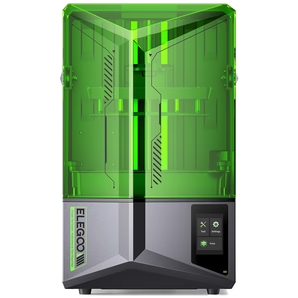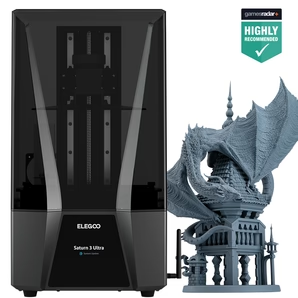3D Printers in Space (NASA's Reliance on 3D Printing Technology)
Space exploration is frequently regarded as the peak of human achievement. But how can we continue to explore and establish ourselves in space if everything we require must be launched up from Earth at an exorbitant cost?
Enter 3D printing!
When it comes to space applications, the possibilities offered by NASA's utilization of this technology are virtually limitless.
This article will go into the fascinating world of 3D printing in space, discuss how NASA is putting this technology to use, and explain why it represents a significant step forward for space travel.
What is 3D Printing in Space?
Additive manufacturing, which is another name for 3D printing, has been around for years and has become common within a variety of industries, including healthcare, the automotive sector (especially for 3D Printing car parts), as well as the fashion and dentistry.
Things, however, get a little more tricky when you start talking about 3D printing in space. When applied in an environment with microgravity, conventional manufacturing processes encounter a unique set of challenges.

However, the ability to produce spare parts, tools, and even new spacecraft components while in orbit has the potential to significantly improve long-duration space missions.
Putting it succinctly, three-dimensional printing in space requires constructing products one layer at a time using materials that are suitable for the conditions of microgravity.
Because of this method, astronauts might no longer have to bring extra supplies with them on missions because they would be able to print anything they need, exactly when they need it.
NASA and Additive Manufacturing: A Match Made in Orbit?
NASA has always been at the forefront of technological breakthroughs, and its commitment to 3D printing is no exception. In acknowledgment of its potential for space missions,
NASA has made considerable expenditures in additive manufacturing. They've tested 3D printers on the International Space Station (ISS) and even devised plans to employ 3D printing to construct habitats on Mars.
NASA's embrace of 3D technology demonstrates its possibilities, from producing the first 3D printed objects in orbit to establishing its Additive Manufacturing Facility aboard the International orbit Station. But why is this technology so critical for space exploration?
The First 3D Printer in Space
In 2014, the fledgling company Made In Space made history by delivering the first 3D resin printer to the International Space Station (ISS) through a partnership with NASA. T
his machine utilized fused filament fabrication, which involved passing a continuous thread of plastic through a heated extruder and then depositing each successive layer of the object's construction onto a tray.
The fact that this effort was successful shows that additive manufacturing can take place in an environment with microgravity.
Rockets and 3D Printing: A New Era in Spacecraft Design?
Rockets are intricate machines, and the manufacturing of even their smallest components can be laborious and pricey. Companies such as Relativity Space are demonstrating the viability of 3D-printed rocket engines in response to the proliferation of 3D printing technology.
NASA is also conducting research on the potential for 3D printing to change the design and construction of rockets.
The production of rocket parts using 3D printers has a number of advantages, including a reduction in prices, a reduction in the amount of time needed for manufacturing, and the capacity to build sophisticated designs that would be hard to create using conventional methods.
Benefits of 3D Printing for Long-Duration Space Missions
Imagine you are on a space mission thousands of kilometers from home and a vital piece of equipment fails. In the past, this would have been an important point of contention. Now that they have access to 3D printing, astronauts can make the tools or parts they require whenever they need them.
The ability to manufacture essential products in space is extremely useful for long-term trips to destinations such as the moon or Mars, which are inaccessible from Earth and do not have the capability of receiving replenishment from our home planet.
The Future of 3D Printing in Space Exploration
The importance of 3D printing in the aerospace sector is expected to rise as the industry grows and evolves. Large-scale 3D printers in space are envisioned, capable of producing whole modules for space stations or habitats on other planets.
We could imagine a future where space research is more sustainable and less reliant on Earth-based resources if we acquire materials from asteroids or the lunar surface.
Challenges and Considerations
Although there are many advantages to 3D printing in space, there are also many obstacles to overcome. The presence of microgravity has an effect on the way that materials behave, which in turn can have an effect on the printing process. In addition, assuring the dependability and quality of 3D-printed parts in space is essential for the success of missions and the safety of astronauts.
Real-world Applications: 3D Printing on the ISS
Several applications have demonstrated the promise of 3D printing technology since it was first introduced on the International Space Station. The ability to make goods on demand has already been shown to be extremely useful for space missions.
This is evidenced by the ratchet wrench that was printed by NASA astronaut Barry "Butch" Wilmore, as well as several other tools and components.
The Role of Private Companies
The contribution of private aircraft enterprises to the field of space exploration is becoming an increasingly important factor. Pioneering the use of 3D printing for a variety of space applications are startups such as Made In Space and Relativity Space.
These applications range from the construction of parts in space to the construction of rockets. Their advancements, when paired with the research conducted by NASA, are paving the way for the future of 3D printing in the aerospace industry.
What's Next for 3D Printing and Space?
It's no longer true that the sky is the limit, thanks to developments in 3D printing technology and rising interest in the exploration of space.
There is a wide variety of intriguing possible uses for 3D printing in space, ranging from the establishment of lunar outposts to the planning of expeditions to Mars. We can anticipate even more ground-breaking advancements in this area as technological development continues to advance at its current rate.
Key Takeaways:
- 3D printing in space involves creating objects layer by layer using materials adapted for microgravity.
- NASA has embraced the potential of 3D printing for space exploration, conducting various experiments and projects related to additive manufacturing.
- The ability to produce tools and parts on-demand in space is invaluable for long-duration missions.
- While there are many benefits, challenges related to microgravity and ensuring the reliability of 3D printed parts remain.
- Collaborations between NASA and private companies are driving innovation and advancements in 3D printing for space applications.
If you're at a loose end on deciding on some cool 3D projects, then consider these ideas:
- 3D Printing Projects
- 3D Printing Board Game Projects
- 3D Printing DIY House Projects
- 3D Printing Toy Projects
- 3D Printing Cosplay & Props
- 3D Printing Diorama Projects
- 3D Printing Miniature Gaming Figures Projects
- 3D Printing Jewelery Projects
- 3D Printing Dental Uses & Ideas
- 3D Printing Sports Equipment Ideas & Projects
- 3D Printing Garden Tools
- 3D Braille Printing
- 3D Printing Modified Car Parts
- 3D Printing in Fashion
- 3D Printing Keychains & Chainrings
- 3D Printing Side Hustles
- 3D Printers for Schools
- Biomimicry and 3D Printing
Now, if none of those tickle your fancy, then what about having a look at some of the World's Most Crazy 3D Printing Projects!




















































































































